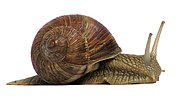spiral, and even a star-shaped form. The oldest rudists are found in late Jurassic rocks in France. The rudists became extinct at the end of the Cretaceous...
7 KB (739 words) - 12:39, 11 January 2024
and seas were populated with now-extinct marine reptiles, ammonites, and rudists, while dinosaurs continued to dominate on land. The world was largely ice-free...
95 KB (9,854 words) - 00:13, 24 August 2024
relatives of Megalodon such as Pachyrisma grande were closely related to the rudists. †Megalodon hungaricum †Megalodon longjiangensis †Megalodon rostratiforme...
3 KB (164 words) - 12:55, 13 February 2024
Ordovician period, 488 to 443 million years ago. One bivalve group, the rudists, became major reef-builders in the Cretaceous, but became extinct in the...
96 KB (9,722 words) - 13:56, 31 August 2024
bryozoa, and parts of the shells of some bivalves (such as oysters and rudists). Calcite is found in spectacular form in the Snowy River Cave of New Mexico...
45 KB (4,752 words) - 14:44, 4 July 2024
Sierra Madre Formation (section Rudists)
lagoonal to estuarine environment and contain many fossil fish, flora and rudists, typical reef-building organisms of the Cretaceous. The formation rests...
9 KB (689 words) - 03:54, 17 July 2024
decline. More modern teleost fish begin to appear. Ammonoids, belemnites, rudist bivalves, sea urchins and sponges all common. Many new types of dinosaurs...
172 KB (9,499 words) - 20:32, 18 August 2024
plesiosaurs, several groups of mammals, ammonites (nautilus-like mollusks), rudists (reef-building bivalves), and various groups of marine plankton. In all...
284 KB (28,299 words) - 14:07, 30 August 2024
order of bivalves known as rudists, were major reef-building organisms during the Cretaceous. By the mid-Cretaceous, rudists became the dominant tropical...
162 KB (18,185 words) - 19:16, 12 August 2024
later successions included stromatoporoids, corals, algae, bryozoa, and rudists (a form of bivalve mollusc). The extent of organic reefs has varied over...
72 KB (8,485 words) - 15:26, 13 August 2024
genus diversity experienced a gradual increase throughout the period. Rudists, the dominant reef-building organisms of the Cretaceous, first appeared...
231 KB (24,898 words) - 17:27, 30 August 2024
Radiolitidae is a family of rudists in the order Hippuritida. These rudists lived between the Jurassic and the Cretaceous (age range: 130.0 to 66.043...
4 KB (268 words) - 11:33, 2 February 2022
bivalve molluscs in the order Hippuritida, family Requieniidae. These rudists lived in the Cretaceous period, from the Valanginian age (136.4–140.2)...
2 KB (106 words) - 15:01, 18 September 2021
Formation is a geologic formation in Jamaica. It preserves fossils such as rudists, echinoids and corals from the Santonian stage of the Cretaceous Period...
2 KB (92 words) - 23:12, 17 December 2021
Bibcode:1994CorRe..13....3C. doi:10.1007/BF00426428. S2CID 42938715. "The Rudists". University of California Museum of Paleontology. Retrieved 2008-11-27...
81 KB (8,949 words) - 01:32, 17 August 2024
February 2020). "Subdaily-Scale Chemical Variability in a Rudist Shell: Implications for Rudist Paleobiology and the Cretaceous Day-Night Cycle". Paleoceanography...
40 KB (4,225 words) - 01:45, 17 August 2024
Caprina is a genus of rudists, a group of marine heterodont bivalves belonging to the family Caprinidae. These stationary intermediate-level epifaunal...
2 KB (85 words) - 21:07, 17 December 2021
feed on detritus. Coccolithophorids and mollusks (including ammonites, rudists, freshwater snails, and mussels), and those organisms whose food chain...
200 KB (21,687 words) - 23:20, 28 August 2024
in eastern China. 155 Ma First blood-sucking insects (ceratopogonids), rudist bivalves, and cheilostome bryozoans. Archaeopteryx, a possible ancestor...
85 KB (4,725 words) - 15:06, 9 August 2024
Caprinidae is a family of rudists, a group of unusual extinct saltwater clams, marine heterodont bivalves in the order Hippuritida. These stationary intermediate-level...
2 KB (115 words) - 13:13, 12 November 2022
fossiliferous limestones with minor levels of dolomites. The formation is rich in rudists and miliolids. Breccias and clayey conglomerates, siltstones and limestones...
4 KB (227 words) - 19:46, 8 July 2024
Requieniidae is a family of rudists, in the order Hippuritida, which lived from 155.7 to 66.043 million years ago. Placed by the WoRMS and Fossilworks...
1 KB (84 words) - 23:28, 17 December 2021
units (members) from younger to older as follows: Basal clastic member Rudist-bearing limestone-marl member Limestone member Actaeonella-bearing limestone-marl...
7 KB (907 words) - 19:58, 31 August 2024
Titanosarcolites is a genus of giant rudist bivalve from the Cretaceous. Its fossils have been found in Jamaica, Southeastern Mexico and the Southern US...
2 KB (159 words) - 05:19, 20 May 2023
Professional Paper 1304:1-104 A. Torre. 1960. Notas sobre rudistas [Notes about rudists]. Memorias de la Sociedad Cubana de Historia Natural 25(1):51-64...
3 KB (139 words) - 20:25, 7 February 2022
Diceratidae is a family of rudists, a group of unusual extinct saltwater clams, marine heterodont bivalves in the order Hippuritida. Genera within the...
1 KB (41 words) - 16:01, 4 February 2022
invertebrates known to have lived in this sea include various species of rudists, crinoids and cephalopods (including squids and ammonites). Large fish...
113 KB (12,424 words) - 16:34, 17 July 2024
development of coral reefs, which abounded with molluscs, particularly rudists. These were the origin of the Urgonian Limestone which forms the upper...
21 KB (2,365 words) - 07:38, 21 August 2024
abundant rudist bivalves within the Caribbean faunal province', the International Union of Geological Sciences (IUGS) included the 'Late Cretaceous rudist bivalves...
3 KB (217 words) - 15:02, 31 January 2024
groups: Caprinidae, a family of extinct bivalve molluscs forming part of the Rudists Caprinae, a family of ruminant mammals, the goat-antelopes, including sheep...
311 bytes (74 words) - 15:04, 20 June 2014





















